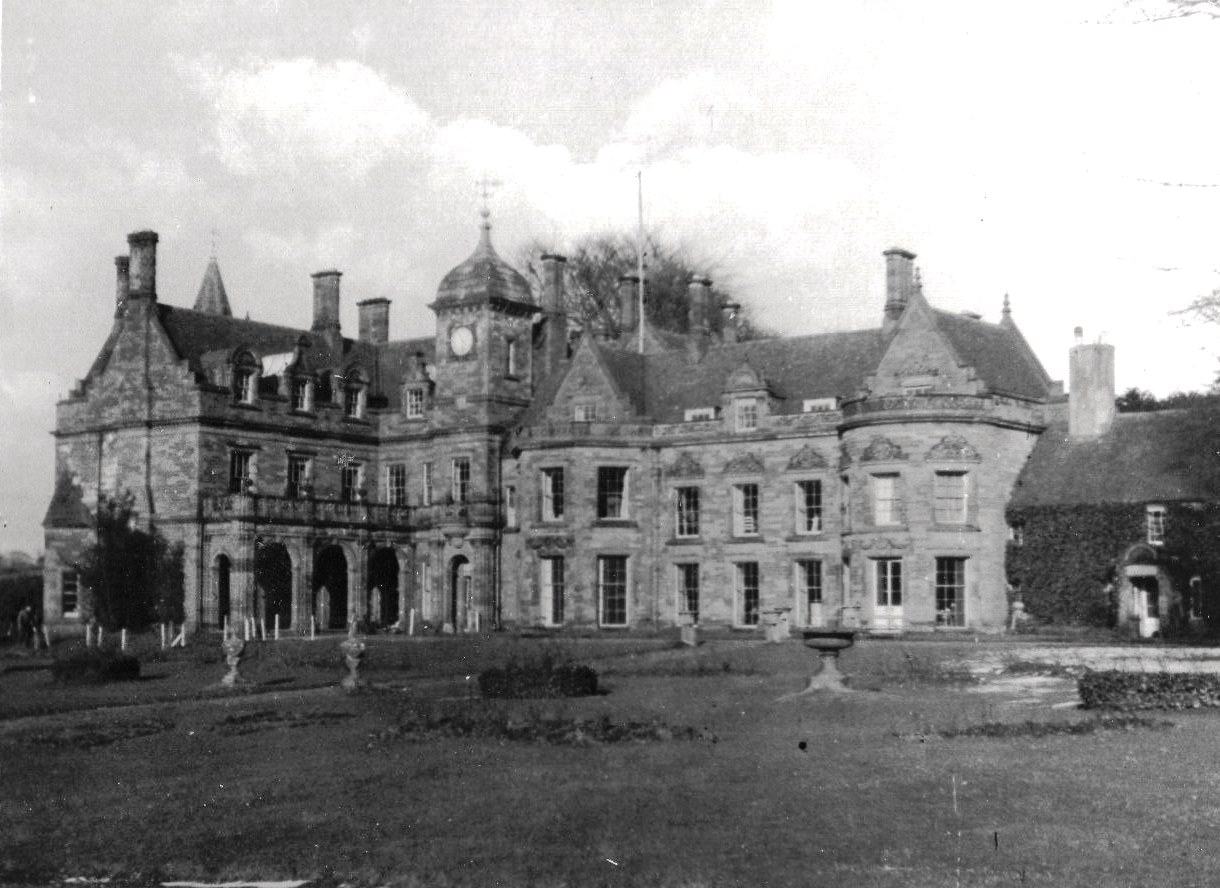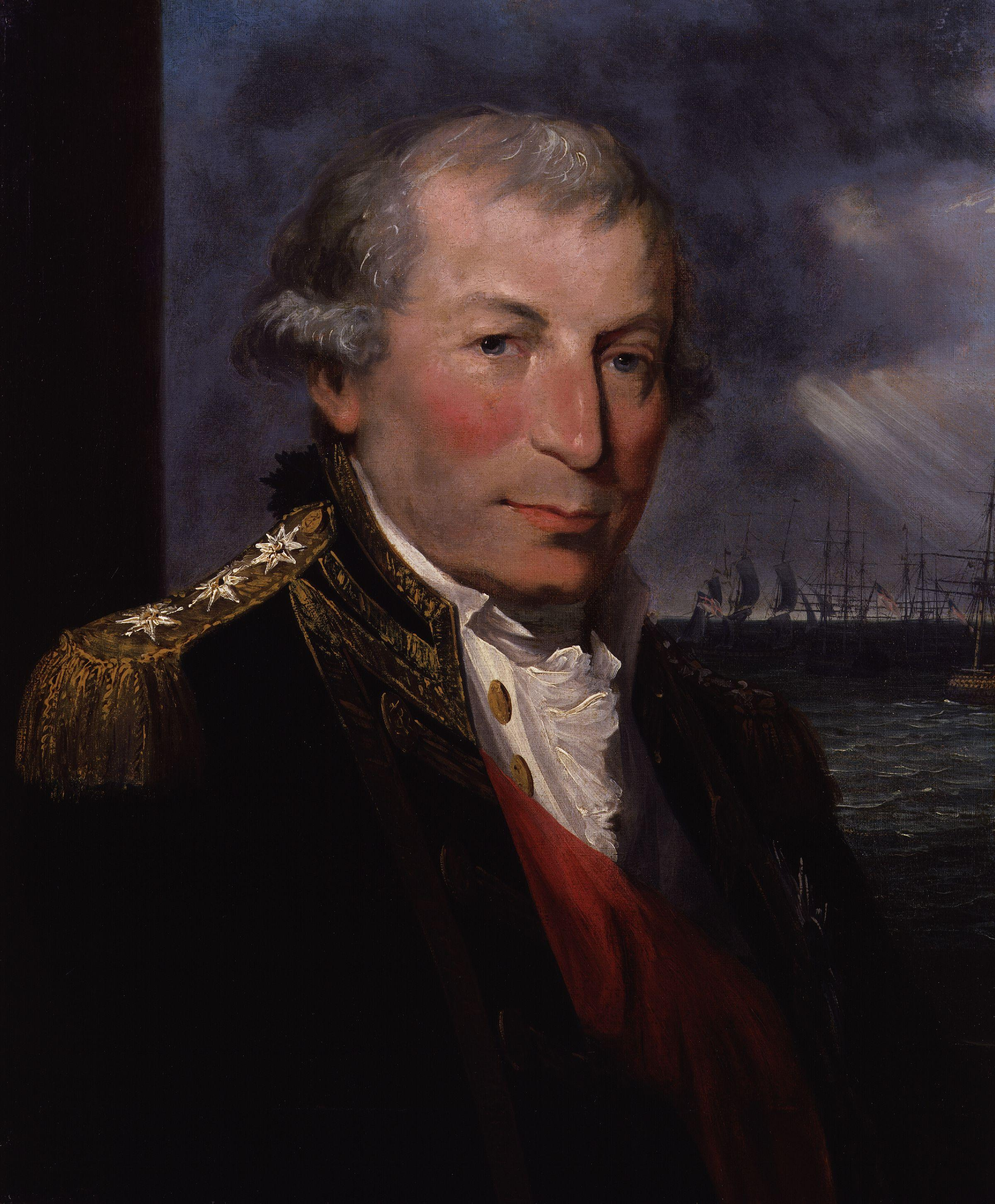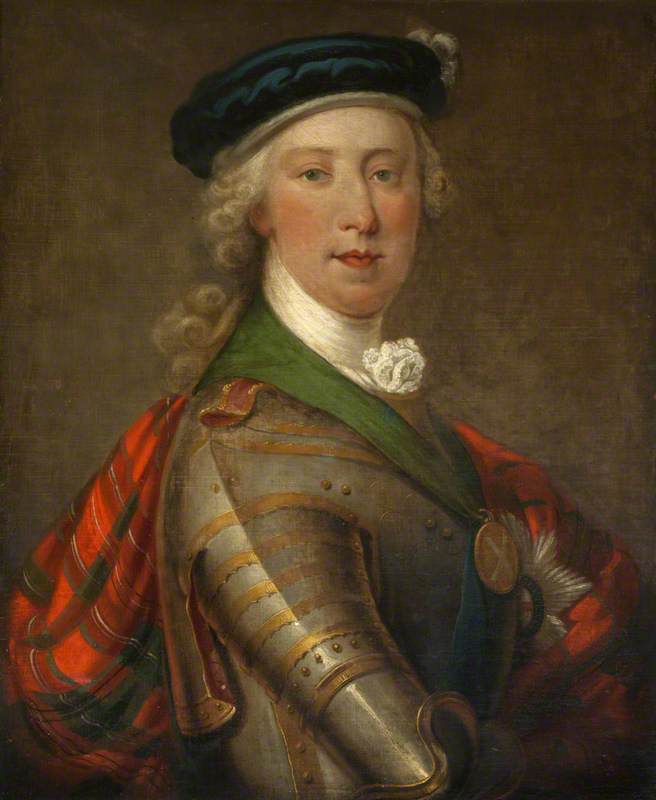|
Meaford Hall, Staffordshire
Meaford Hall in Staffordshire, England is a 17th-century country house at Meaford, near Stone, Staffordshire. The River Trent runs through the estate's meadow. On the river was one round and one three-sided half-turret. It is a Grade II* listed building that reached as much as 156 feet long by 45 feet wide with a basement, ground floor and second floor. The hall consisted of two buildings with a chamber, work room and bedroom. The basement included a deeds room, wine cellar, two beer cellars and dispense cellar. The estate was founded in the 8th century and acquired by William Jervis of Chatcull in the late 17th century and remained the seat of the Jervis family for almost 250 years. It played a role in The 'Forty-Five' rebellion by the Young Pretender, Prince Charles Edward Stuart. Swinfen Jervis received 70 soldiers and awaited an engagement that never occurred. It was the birthplace of Admiral John Jervis, later 1st Earl St Vincent, hero of the defeat of the Spanish at the ... [...More Info...] [...Related Items...] OR: [Wikipedia] [Google] [Baidu] |
Meaford Hall, Stone, Staffordshire, 1944
Meaford may refer to: * Meaford, Ontario, Canada *Meaford, Staffordshire Meaford is a hamlet in the civil parish of Stone Rural, in the Stafford district, in the county of Staffordshire, England. It lies at the junction of the A34 and A51 roads, north of Stone on the River Trent. Meaford Lock is on the Trent and M ..., England * Meaford Hall, Staffordshire, England * Meaford Power Station, England {{disambig, geodis ... [...More Info...] [...Related Items...] OR: [Wikipedia] [Google] [Baidu] |
John Jervis, 1st Earl Of St Vincent
Admiral of the Fleet John Jervis, 1st Earl of St Vincent (9 January 1735 – 13 March 1823) was an admiral in the Royal Navy and Member of Parliament in the United Kingdom. Jervis served throughout the latter half of the 18th century and into the 19th, and was an active commander during the Seven Years' War, American War of Independence, French Revolutionary War and the Napoleonic Wars. He is best known for his victory at the 1797 Battle of Cape Saint Vincent, from which he earned his titles, and as a patron of Horatio Nelson. Despite having a fierce reputation for discipline his crews had great affection for him, calling him Old Jarvie. Jervis was also recognised by both political and military contemporaries as a fine administrator and naval reformer. As Commander-in-chief of the Mediterranean, between 1795 and 1799 he introduced a series of severe standing orders to avert mutiny. He applied those orders to both seamen and officers alike, a policy that made him a controve ... [...More Info...] [...Related Items...] OR: [Wikipedia] [Google] [Baidu] |
Listed Buildings In Stone Rural
Stone Rural is a civil parish in the Borough of Stafford, Staffordshire, England. It contains 39 listed buildings that are recorded in the National Heritage List for England. Of these, three are at Grade II*, the middle of the three grades, and the others are at Grade II, the lowest grade. The parish contains areas around the town of Stone and includes the villages of Aston-By-Stone to the south, and Meaford, Moddershall, and Oulton to the south. The Trent and Mersey Canal runs through the parish, and the listed buildings associated with this are two bridges and two mileposts. The Moddershall Valley contained a number of watermill A watermill or water mill is a mill that uses hydropower. It is a structure that uses a water wheel or water turbine to drive a mechanical process such as milling (grinding), rolling, or hammering. Such processes are needed in the production of ...s and what remains of some of these are listed. Most of the other listed buildings are hous ... [...More Info...] [...Related Items...] OR: [Wikipedia] [Google] [Baidu] |
HMRC
, patch = , patchcaption = , logo = HM Revenue & Customs.svg , logocaption = , badge = , badgecaption = , flag = , flagcaption = , image_size = , commonname = , abbreviation = , motto = , formed = , preceding1 = Inland Revenue , preceding2 = HM Customs and Excise , dissolved = , superseding = , employees = 63,042 FTE , volunteers = , budget = (2018–2019) , country = United Kingdom , constitution1 = Commissioners for Revenue and Customs Act 2005 , speciality1 = customs , speciality2 = tax , headquarters = 100 Parliament Street, London, SW1A 2BQ , sworntype = , sworn = , unsworntype = , unsworn = , minister1name = Andrew Griffith MP , minister1pfo = Economic Secretary to the Treasury and mi ... [...More Info...] [...Related Items...] OR: [Wikipedia] [Google] [Baidu] |
Missing Trader Fraud
Missing trader fraud (also called missing trader intra-community fraud or MTIC fraud) involves the theft of Value Added Tax (VAT) from a government by fraudsters who exploit VAT rules, most commonly the European Union VAT rules which provide that the movement of goods between member states is VAT-free. There are different variations of the fraud but they generally involve a trader charging VAT on the sale of goods and absconding with the VAT (instead of paying the VAT to the government's taxation authority). The term "missing trader" is used because the fraudster has gone missing with the VAT. A common form of missing trader fraud is carousel fraud. In carousel fraud, VAT and goods are passed around between companies and jurisdictions, similar to how a carousel revolves. VAT rules The usual operation of VAT is as follows: a business that buys and sells goods charges VAT to those to whom it sells ('output tax'), and is charged VAT by those from whom it purchases ('input tax' ... [...More Info...] [...Related Items...] OR: [Wikipedia] [Google] [Baidu] |
Edward Jervis Jervis, 2nd Viscount St Vincent
Edward Jervis Jervis, 2nd Viscount St Vincent (1 April 1767 – 25 September 1859) was a Viscount in the Peerage of the United Kingdom. Early life Jervis was born Edward Jervis Ricketts, the second son of William Henry Ricketts and Mary Jervis. Mary Jervis was the daughter of Swynfen Jervis, Rector of Meaford, Staffordshire and the sister of Admiral of the Fleet John Jervis, 1st Earl of St Vincent. He inherited the viscountcy of St Vincent in 1823 by special remainder on the death of his uncle and changed his name by Royal Licence to Edward Jervis Jervis. Jervis resided at the family seats of Meaford Hall and Little Aston Hall, both in Staffordshire. He was Lord of the Manor of Little Aston. Marriages and children Jervis married twice. On 29 January 1790 he married Hon Mary Cassandra Twisleton, daughter of Major-General Thomas Twisleton, 13th Baron Saye and Sele Major General Thomas Twisleton, 13th Baron Saye and Sele (c. 1735 – 1 July 1788) was a British Army office ... [...More Info...] [...Related Items...] OR: [Wikipedia] [Google] [Baidu] |
Meaford Hall From Window, 1944
Meaford may refer to: * Meaford, Ontario, Canada *Meaford, Staffordshire Meaford is a hamlet in the civil parish of Stone Rural, in the Stafford district, in the county of Staffordshire, England. It lies at the junction of the A34 and A51 roads, north of Stone on the River Trent. Meaford Lock is on the Trent and M ..., England * Meaford Hall, Staffordshire, England * Meaford Power Station, England {{disambig, geodis ... [...More Info...] [...Related Items...] OR: [Wikipedia] [Google] [Baidu] |
Battle Of Cape St Vincent (1797)
The Battle of Cape St. Vincent (14 February 1797) was one of the opening battles of the Anglo-Spanish War (1796–1808), as part of the French Revolutionary Wars, where a British fleet under Admiral Sir John Jervis defeated a greatly superior Spanish fleet under Admiral Don José de Córdoba y Ramos near Cape St. Vincent, Portugal. Background After the signing of the Treaty of San Ildefonso in 1796 allying Spanish and French forces against Great Britain, the British navy blockaded Spain in 1797, impairing communications with its Spanish Empire. The Spanish declaration of war on Britain and Portugal in October 1796 made the British position in the Mediterranean untenable. The combined Franco-Spanish fleet of 38 ships of the line heavily outnumbered the British Mediterranean Fleet of fifteen ships of the line, forcing the British to evacuate their positions in first Corsica and then Elba. Early in 1797, the Spanish fleet of 27 ships of the line, which were supposed to join th ... [...More Info...] [...Related Items...] OR: [Wikipedia] [Google] [Baidu] |
Prince Charles Edward Stuart
Charles Edward Louis John Sylvester Maria Casimir Stuart (20 December 1720 – 30 January 1788) was the elder son of James Francis Edward Stuart, grandson of James II and VII, and the Stuart claimant to the thrones of England, Scotland and Ireland from 1766 as Charles III. During his lifetime, he was also known as "the Young Pretender" and "the Young Chevalier"; in popular memory, he is known as Bonnie Prince Charlie. Born in Rome to the exiled Stuart court, he spent much of his early and later life in Italy. In 1744, he travelled to France to take part in a planned invasion to restore the Stuart monarchy under his father. When the French fleet was partly wrecked by storms, Charles resolved to proceed to Scotland following discussion with leading Jacobites. This resulted in Charles landing by ship on the west coast of Scotland, leading to the Jacobite rising of 1745. The Jacobite forces under Charles initially achieved several victories in the field, including the Battle of ... [...More Info...] [...Related Items...] OR: [Wikipedia] [Google] [Baidu] |
Staffordshire
Staffordshire (; postal abbreviation Staffs.) is a landlocked county in the West Midlands region of England. It borders Cheshire to the northwest, Derbyshire and Leicestershire to the east, Warwickshire to the southeast, the West Midlands County and Worcestershire to the south and Shropshire to the west. The largest settlement in Staffordshire is Stoke-on-Trent, which is administered as an independent unitary authority, separately from the rest of the county. Lichfield is a cathedral city. Other major settlements include Stafford, Burton upon Trent, Cannock, Newcastle-under-Lyme, Rugeley, Leek, and Tamworth. Other towns include Stone, Cheadle, Uttoxeter, Hednesford, Brewood, Burntwood/Chasetown, Kidsgrove, Eccleshall, Biddulph and the large villages of Penkridge, Wombourne, Perton, Kinver, Codsall, Tutbury, Alrewas, Barton-under-Needwood, Shenstone, Featherstone, Essington, Stretton and Abbots Bromley. Cannock Chase AONB is within the county as well as parts of the ... [...More Info...] [...Related Items...] OR: [Wikipedia] [Google] [Baidu] |
Young Pretender
Charles Edward Louis John Sylvester Maria Casimir Stuart (20 December 1720 – 30 January 1788) was the elder son of James Francis Edward Stuart, grandson of James II and VII, and the Stuart claimant to the thrones of England, Scotland and Ireland from 1766 as Charles III. During his lifetime, he was also known as "the Young Pretender" and "the Young Chevalier"; in popular memory, he is known as Bonnie Prince Charlie. Born in Rome to the exiled Stuart court, he spent much of his early and later life in Italy. In 1744, he travelled to France to take part in a planned invasion to restore the Stuart monarchy under his father. When the French fleet was partly wrecked by storms, Charles resolved to proceed to Scotland following discussion with leading Jacobites. This resulted in Charles landing by ship on the west coast of Scotland, leading to the Jacobite rising of 1745. The Jacobite forces under Charles initially achieved several victories in the field, including the Battle of ... [...More Info...] [...Related Items...] OR: [Wikipedia] [Google] [Baidu] |
Jacobite Rising Of 1745
The Jacobite rising of 1745, also known as the Forty-five Rebellion or simply the '45 ( gd, Bliadhna Theàrlaich, , ), was an attempt by Charles Edward Stuart to regain the Monarchy of Great Britain, British throne for his father, James Francis Edward Stuart. It took place during the War of the Austrian Succession, when the bulk of the British Army was fighting in mainland Europe, and proved to be the last in Jacobite risings, a series of revolts that began in Jacobite rising of 1689, 1689, with major outbreaks in 1708, Jacobite rising of 1715, 1715 and Jacobite rising of 1719, 1719. Charles launched the rebellion on 19 August 1745 at Glenfinnan in the Scottish Highlands, capturing Edinburgh and winning the Battle of Prestonpans in September. At a council in October, the Scots agreed to invade England after Charles assured them of substantial support from English Jacobitism, Jacobites and a simultaneous French landing in Southern England. On that basis, the Jacobite Army (1745) ... [...More Info...] [...Related Items...] OR: [Wikipedia] [Google] [Baidu] |







